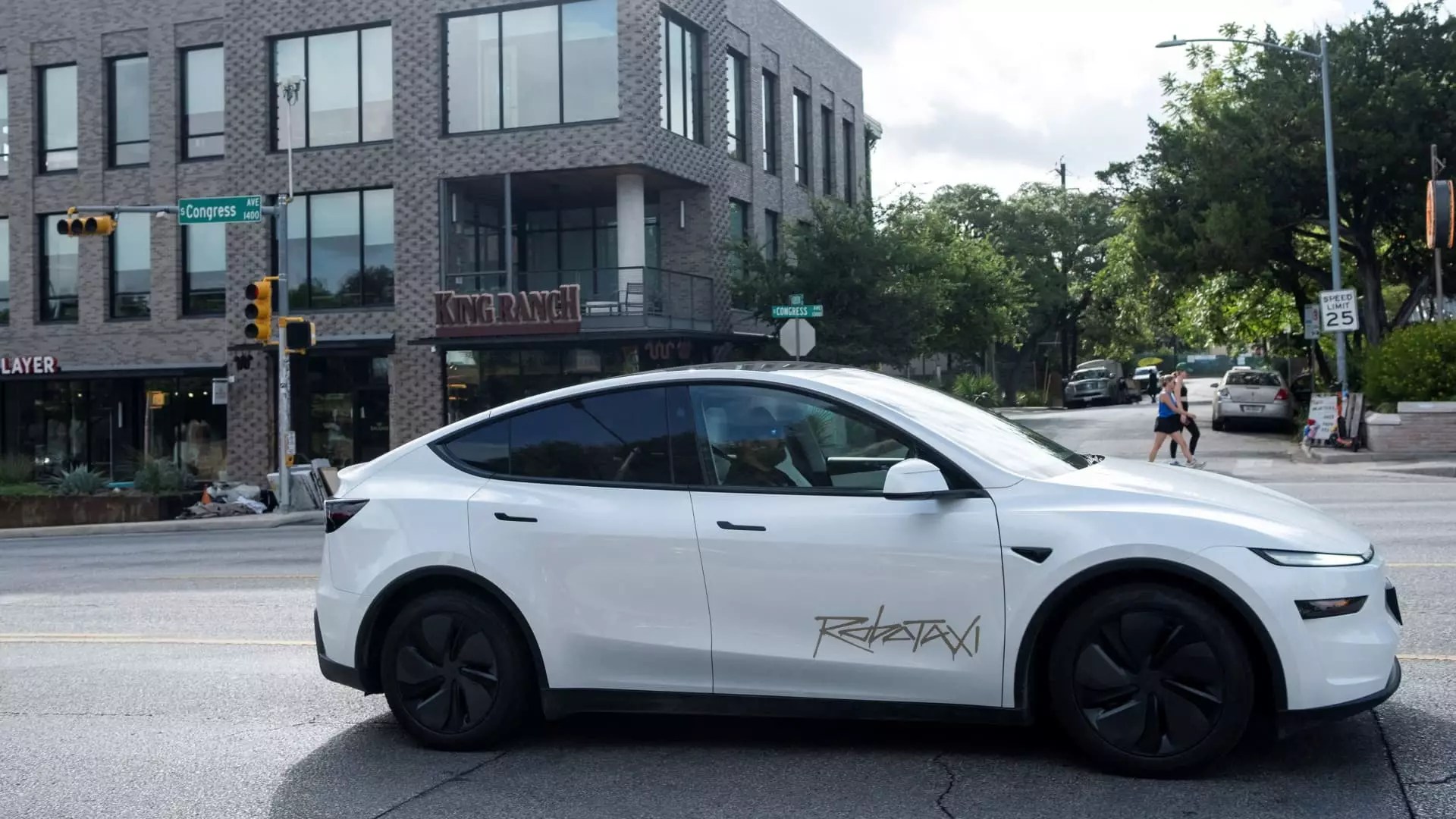Tesla’s recent attempt to debut its autonomous robotaxi service in Austin, Texas, has unfolded under a cloud of chaotic incidents and growing skepticism. This initiative, which had been much anticipated and heralded by the company as a significant stride towards full vehicle autonomy, swiftly devolved into a public relations nightmare. Videos circulating on social media show these robotaxis behaving erratically—travelling against traffic and braking abruptly for stationary objects. One cannot help but wonder how the fervor surrounding Elon Musk’s vision of fully autonomous vehicles could lead to such dangerously flawed execution.
It’s worth noting that Tesla trumpeted this limited launch, rolling it out to a select group of enthusiastic Tesla advocates rather than the general public. The excitement surrounding such exclusivity should have served as a red flag, yet it instead fueled the perception of innovation. As the National Highway Traffic Safety Administration (NHTSA) swiftly intervened, one must question whether the exhilarating allure of autonomy has overshadowed the fundamental need for safety—a core tenet of any vehicle system.
The Risks of Unchecked Autonomy
In a world increasingly reliant on technology, the implications of robotaxis operating on public roads raise serious concerns. The NHTSA’s position—stating that it does not pre-approve new technologies—highlights the gaps in regulatory oversight. Although Tesla claims compliance with federal motor vehicle safety standards, the reality is that these autonomous features are being rolled out in a trial-and-error basis, often at the expense of public safety. Safety data, which should be paramount, seems to take a back seat to Musk’s grand vision.
The fact that incidents necessitating federal scrutiny have arisen during such a nascent phase of this technology indicates a worrying trend. Elon Musk’s lofty promises of achieving “full autonomy” have repeatedly proven to be aspirational at best and deceptive at worst. With each failed promise, the trust of consumers and the broader public diminishes. Still, Tesla’s shareholders celebrated a temporary surge in stock prices following the service launch, which begs the question: is there a dangerous disconnect between corporate goals and consumer safety?
A Century of Innovation or Just a Mirage?
While competing platforms like Waymo have achieved tangible milestones—over 10 million paid rides—the performance of Tesla’s robotaxis falls significantly short of its intended capabilities. Accountability lies not only with Tesla as a manufacturer but also with the regulatory entities that seem unprepared to navigate the intricate landscape of autonomous driving technology. The apparent ease with which Musk’s ambitions have been translated into operational reality is often overshadowed by the substantial risks it poses to everyday drivers, pedestrians, and the greater transport ecosystem.
Tesla’s model, which relies heavily on a Human Safety Supervisor in the passenger seat during its trial runs, paints a concerning portrait of autonomy’s readiness. If the technology needs human oversight, can it genuinely be considered autonomous? This deliberate facade of safety raises more serious questions about the integrity of the entire endeavor.
The Future of Autonomous Driving: A Mirage?
As we stand on the precipice of potentially revolutionary transportation, the lessons emanating from Tesla’s misstep serve as a critical reminder of the importance of caution. The hype should not be permitted to eclipse accountability. Reinforced by floundering promises and sobering reality checks, the robotaxi concept may still have legs but requires tempered enthusiasm and vigilance. The public deserves more than just an enticing vision; they deserve functional, safe technology that prioritizes their welfare above all.
In navigating the winding roads of innovation, stakeholders must build a bridge between aspiration and accountability. For now, Tesla’s robotaxi service stands not as a beacon of hope in the autonomous world, but rather as a stark reminder of the perils of overzealous ambition an undetermined technical readiness.


Leave a Reply